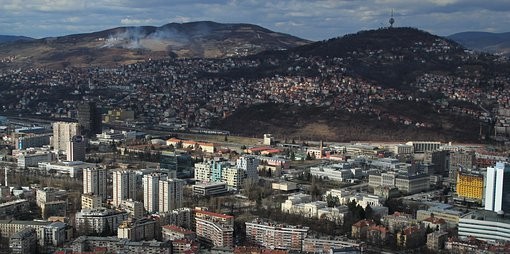Sarajevo is the capital city of Bosnia and Herzegovina. Although this city has been destroyed in the Bosnian war, it is considered as the fastest growing city and has undergone re-construction programs in the past years. Its 600 years of history are evident on some of the tourist attractions here and it is one of the major draws for visiting this city. In fact, it was designated as UNESCO Creative City for incorporating its culture and history in their developments plans. In 2009, it was listed as one of the top ten cities to visit in 2010 and a significant increase in number of visitors has been recorded in the succeeding years specially in 2019.
Sarajevo is home to numerous Ottoman architecture and one of the most prominent is the Gazi Husrev-beg Mosque. It was built in the 16th century and has been the largest historical mosque in the country. The multi dome features is a representation of a Classical Ottoman architecture. It serve as a religion center for Islamic community and the grandeur interior of the mosque exudes tranquility, it is decorated with a calligraphy of verses in the book of Qur'an.
Located in the southeast of Sarajevo is the Mount Trebevic. This mountain, being a vantage point in Bosnian war has also had its fair share of history and now serves as an important tourist destination. Before war, this mountain was famous for being a Winter Olympics venue and a great place for winter outdoor activities but locals were prevented from coming here after, because of the explosive remnants of war and destroyed roadways. They have cleared landmines and rebuilt roadways and developed the tourism aspect by opening cafes and restaurants, hotels and a leisure park. They even resumed the cable cars operation which is an added attractions for visitors. Now this mountain is a protected area with a purpose of conserving its natural beauty.
If you are interested of how the city was able to endure and thrive during the war, then head to the Sarajevo Tunnel. It is a passage built under the city's airport runway, connecting Sarajevo to other side of Bosnia particularly the UN controlled area. The tunnel served as a passage way for supplies of food, medicine and military equipment. It was named as the Tunnel of Hope for its significant role in the city's survival. Now this tunnel is home to a museum and there is a plan to open a complex tunnel but this time, for tourism purpose.
Sarajevo is home to numerous Ottoman architecture and one of the most prominent is the Gazi Husrev-beg Mosque. It was built in the 16th century and has been the largest historical mosque in the country. The multi dome features is a representation of a Classical Ottoman architecture. It serve as a religion center for Islamic community and the grandeur interior of the mosque exudes tranquility, it is decorated with a calligraphy of verses in the book of Qur'an.
Located in the southeast of Sarajevo is the Mount Trebevic. This mountain, being a vantage point in Bosnian war has also had its fair share of history and now serves as an important tourist destination. Before war, this mountain was famous for being a Winter Olympics venue and a great place for winter outdoor activities but locals were prevented from coming here after, because of the explosive remnants of war and destroyed roadways. They have cleared landmines and rebuilt roadways and developed the tourism aspect by opening cafes and restaurants, hotels and a leisure park. They even resumed the cable cars operation which is an added attractions for visitors. Now this mountain is a protected area with a purpose of conserving its natural beauty.
If you are interested of how the city was able to endure and thrive during the war, then head to the Sarajevo Tunnel. It is a passage built under the city's airport runway, connecting Sarajevo to other side of Bosnia particularly the UN controlled area. The tunnel served as a passage way for supplies of food, medicine and military equipment. It was named as the Tunnel of Hope for its significant role in the city's survival. Now this tunnel is home to a museum and there is a plan to open a complex tunnel but this time, for tourism purpose.


